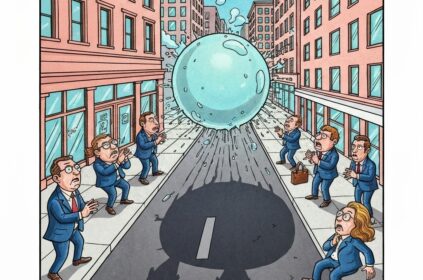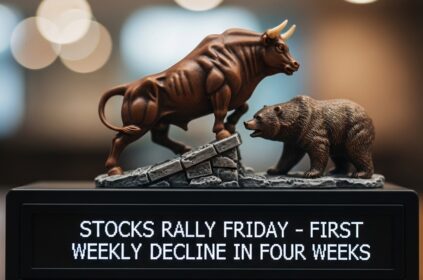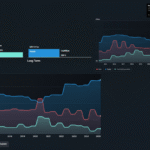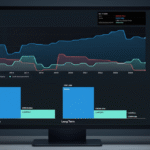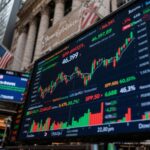Market shows resilience with tech strength offsetting shutdown concerns
Stock futures traded near the flatline Friday morning as investors digested a strong session that saw major indexes reach fresh all-time highs, with the surging artificial intelligence sector appearing to eclipse worries about the ongoing government shutdown entering its third day.
Futures contracts tied to the Dow Jones Industrial Average edged up just 1 point in pre-market trading, while S&P 500 and Nasdaq 100 futures hovered slightly above breakeven, suggesting a cautious start to the session.
AI Trade Powers Record-Breaking Session
Thursday’s trading session delivered another milestone for equity markets, with all three major U.S. indexes climbing to record territory. The S&P 500 inched higher by 0.06%, while the Dow Jones Industrial Average advanced more than 78 points, representing a gain of nearly 0.2%. The tech-heavy Nasdaq Composite outperformed with a 0.4% rise.
The semiconductor sector led the charge, with Nvidia surging 0.9% to reach an all-time high. The chipmaker’s strength rippled through the industry, lifting Intel and AMD more than 3% each as investors continued to bet on the long-term growth potential of artificial intelligence infrastructure.
Shutdown Impact Remains Muted—For Now
The government shutdown, which began after Congress failed Tuesday to reach agreement on funding legislation, has entered its third day with no immediate resolution in sight. The Congressional Budget Office estimates that 750,000 federal workers will be furloughed each day the shutdown persists.
Despite the political gridlock, markets have largely shrugged off the disruption—at least so far. Historical precedent suggests investors may be right to maintain their composure.
“[Thursday’s] market moves suggest that the history of govt shutdowns still holds sway,” noted Paul Christopher, head of global investment strategy at Wells Fargo Investment Institute. “These events have modest negative economic impacts as they occur, but the eventual reopening of the federal bureaucracy erases those nicks to the economy.”
Christopher advised investors to “look through the event” and focus on longer-term economic drivers including potential tariff reductions, anticipated tax benefits for corporations and individuals in early 2026, deregulation efforts, and lower borrowing costs as the Federal Reserve cuts interest rates.
Economic Concerns Linger Beneath the Surface
Not everyone shares such optimism about the shutdown’s benign nature. Treasury Secretary Scott Bessent warned Thursday that the funding lapse could deliver “a hit to the GDP, a hit to growth and a hit to working America.”
The shutdown has also created an economic data blackout, with the Labor Department pausing virtually all activity. Most notably, Friday’s scheduled release of the September nonfarm payrolls report has been postponed, depriving the Federal Reserve of crucial labor market information ahead of its October interest rate decision.
President Donald Trump has threatened massive layoffs of federal workers, intensifying existing concerns about labor market softness. On Thursday, Trump claimed Democrats have given him an “unprecedented opportunity” to cut federal agencies.
The political standoff stems from Democrats’ insistence on passing a spending bill that would extend health care tax credits for millions of Americans—a demand that has drawn retaliation from Trump and Republican leadership.
Weekly Gains on Track Despite Uncertainty
Despite the political turmoil and macroeconomic headwinds including inflation risks and labor market concerns, equity markets are positioned to post solid weekly gains. The S&P 500 has climbed nearly 1.1% for the week, while the Dow has added 0.6% and the Nasdaq has surged 1.6%.
The resilience suggests that investors remain focused on corporate fundamentals and the transformative potential of artificial intelligence, even as Washington dysfunction creates noise in the background. Whether this optimism proves justified may depend on how quickly lawmakers can reach a compromise—and what economic damage accumulates in the meantime.




